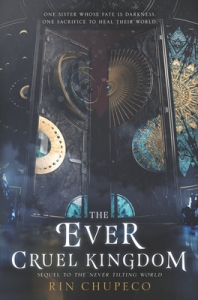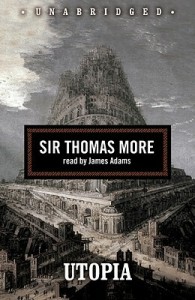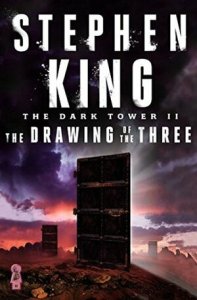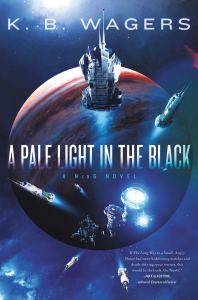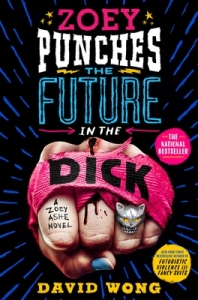Title: The Waste Lands
Series: The Dark Tower #3
Author: Stephen King
Genre: Low fantasy post-apocalyptic horror Western with portal fantasy elements is my best guess on this one
Trigger Warnings: Blood, death, death of animals, death of children, mental illness, forced institutionalization (mentions), gun violence, body horror, injury, child emotional neglect, drug use (mentions), sexual assault, rape (explicit on-page), excrement, bodily fluids, suicide
Spoiler Warning: This book is third in a series, and reading past this point will expose you to MAJOR spoilers of the previous books.
Back Cover:
Several months have passed, and Roland’s two new tet-mates have become proficient gunslingers. Eddie Dean has given up heroin, and Odetta’s two selves have joined, becoming the stronger and more balanced personality of Susannah Dean. But while battling The Pusher in 1977 New York, Roland altered ka by saving the life of Jake Chambers, a boy who—in Roland’s where and when—has already died. Now Roland and Jake exist in different worlds, but they are joined by the same madness: the paradox of double memories.
Roland, Susannah, and Eddie must draw Jake into Mid-World then follow the Path of the Beam all the way to the Dark Tower. But nothing is easy in Mid-World. Along the way our tet stumbles into the ruined city of Lud, and are caught between the warring gangs of the Pubes and the Grays. The only way out of Lud is to wake Blaine the Mono, an insane train that has a passion for riddling, and for suicidal journeys.
Review:
Only Stephen King could put a fantasy version of a Wild West gunslinger, a heroin addict from the 1980s, and a disabled activist with multiple personalities in a riddle contest with a sentient train and make it feel like horror. And not just horror, but really good horror.
After The Drawing of the Three, I really wasn’t enjoying this series all that much. I only read book two to discuss it with a friend, and said friend (and a spoiler he gave me after I finished book two) was the main reason I picked up this book.
And I’m so glad I did, because I actually enjoyed this one.
I think a large part of that was the setting. Instead of desert in The Gunslinger and an interminable beach in The Drawing of the Three, Roland and company actually went to some interesting places in this book. They spent some time in a forest, traveling across a grassland, and in a small village entirely populated by elderly people. But the most interesting place to me by far was the city of Lud.
Lud has a very post-apocalyptic feeling – even though it hadn’t gone through one singular apocalypse, it’s been devastated by years of war, two different factions fighting each other within the city walls, and terrifying technological happenings that take on a supernatural element because no one understands how or why they work. Considering that the gang was just passing through, I got to see a remarkable amount of the city, but I wish I had been able to explore it more. I love the idea of a long-lost people creating great architectural and technological marvels and the people living with them now not comprehending what it was that the ancient people actually did.
This book also reveals some more details about Roland’s world and why it is the way it is (giving no answers but raising plenty of questions), a bit about Roland himself, and a lot more about Jake. It gets Eddie on board with the “find the Dark Tower” quest, but it still doesn’t explain what the Dark Tower does or why Roland wants it so badly. There’s several encounters with terrifying ancient technology that were really interesting, and it’s definitely leaning harder into horror than the previous two books did.
I can’t call this one of my favorite books, but I actually enjoyed it. I was already planning on reading the next book, and then this one went and ended on a cliffhanger. As annoying as that is, it makes me glad I’d already decided to continue the series. If nothing else, this world is finally getting interesting.
The Dark Tower series:
- The Gunslinger
- The Drawing of the Three
- The Waste Lands
- Wizard and Glass
- Wolves of the Calla
- Song of Susannah
- The Dark Tower





